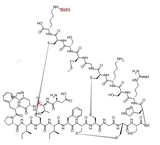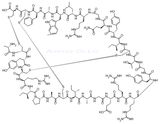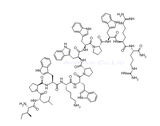|
|
Antimicrobial peptides —————————————————————————————————————————————— Antimicrobial peptides (also called host defence peptides) are an evolutionarily conserved component of the innate immune res-ponse and are found among all classes of life. Fundamental differences exist between prokaryotic and eukaryotic cells that may represent targets for antimicrobial peptides. These peptides are potent, broad spectrum antibiotics which demonstrate potential as novel therapeutic agents. Antimicrobial peptides have been demonstrated to kill Gram negative and Gram positive bacteria (including strains that are resistant to conventional antibiotics), mycobacteria (including Mycobacterium tuberculosis), enveloped viruses, fungi and even transformed or cancerous cells. Antimicrobial peptides are a unique and diverse group of molecules, which are divided into subgroups on the basis of their amino acid composition and structure. Antimicrobial peptides are generally between 12 and 50 amino acids. These peptides include two or more positively charged residues provided by arginine, lysine or, in acidic environments, histidi-ne, and a large proportion (generally >50%) of hydrophobic residues Apeptide Provides the many Antimicrobial peptides, you can select which one you need. |













